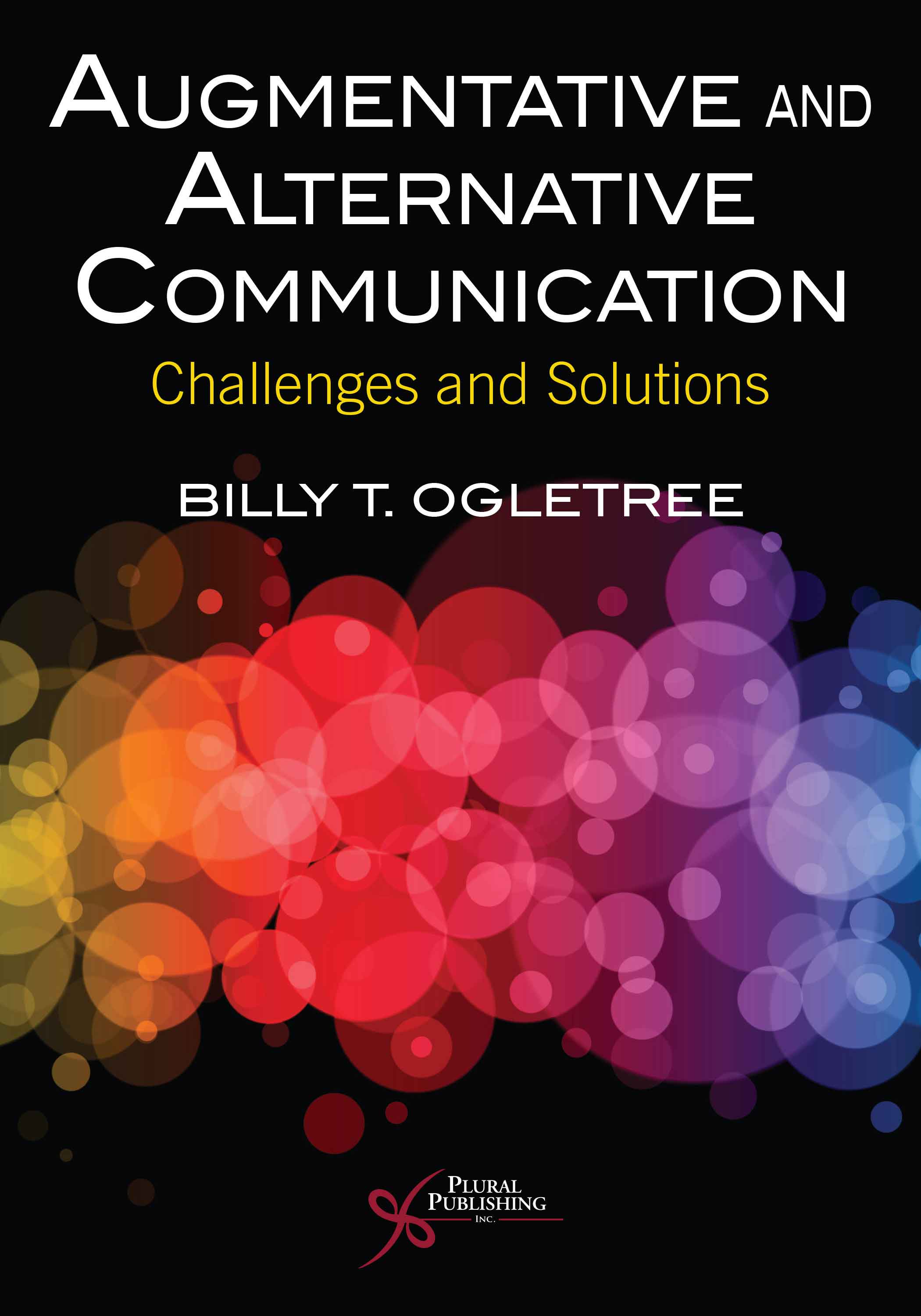
Augmentative and Alternative Communication: Challenges and Solutions
First Edition
Billy T. Ogletree
Details: 399 pages, B&W, Softcover, 7" x 10"
ISBN13: 978-1-63550-286-2
© 2021 | Available
For Instructors
Purchase
Providers of Augmentative and Alternative Communication (AAC) face a myriad of challenges in a rapidly changing and developing field. Augmentative and Alternative Communication: Challenges and Solutions is a unique solution-oriented text intended to prepare professionals to face those challenges with a can do perspective. Featuring contributions from prominent AAC researchers and providers, as well as actual AAC users, this resource traverses a wide range of scenarios that clinicians deal with on a daily basis.
Augmentative and Alternative Communication: Challenges and Solutions is divided into five sections with each chapter offering a different evidence-based solution. Part I provides an introduction and basis for the rest of the book. Part II focuses on the unique challenges of providing AAC in childhood, while Part III centers on dealing with adult disorders. In Part IV, the authors delve into special populations and issues, such as assisting individuals with multiple disabilities. In Part V, clinicians will find tips for becoming a solution-oriented provider.
Key Features
- Contributions from national experts in AAC
- Quotes and vignettes representing the experiences of actual AAC users
- Featured challenges faced by providers and users alike
- Evidence-based solutions for ready application in clinical contexts
- Tools for implementing certain strategies, including example meeting scripts
- A comprehensive glossary of terms
- A highly readable writing style
- An introductory chapter with bolded key terms to improve retention of the material
Billy T. Ogletree Discusses Augmentative and Alternative Communication: Challenges and Solutions
Reviews
“This book explores the challenges that come with using augmentative and alternative communication (AAC) devices and offers solutions to both the users and professionals working with them. This is not a book for beginners, but for those who have experience working with people who use AAC devices.
The purpose is to discuss the myriad challenges that can and do occur when implementing AAC for those with complex communication needs. […]
The first of the book's five sections is an introductory chapter. The second section discusses AAC challenges and solutions for children, covered in four chapters. The third section focuses AAC challenges and solutions for adults in three chapters. The fourth section discusses special populations and issues including people on the autism spectrum, AAC for people with profound disabilities, communicating emotions, and working with multicultural populations and their families. The fifth section is a chapter that offers some final thoughts and seeks to empower providers to become solution oriented.
One of my favorite aspects of this book is that it addresses the challenges that come with AAC, both those faced by users and those faced by practitioners and researchers. The book does not stop at describing challenges, it also describes successful solutions to these challenges, solutions that can be used by professionals and AAC users. Another positive feature is that the book discusses both children and adults. Unlike other books that provide introductory information, this one provides case scenarios that enable experienced users to dig deeper into the knowledge of AAC and in a way that is easy to understand. As a professor teaching a class on AAC, I plan to add this book to my resources on AAC.”
— Yvana Uranga-Hernandez, PhD, CCC-SLP, Biola University, in Doody's Review (September 2021)
Preface
Contributors
Part I. Introduction
Chapter 1. Challenges and Solutions in Augmentative and Alternative Communication (AAC)
Billy T. Ogletree
Part II. AAC Challenges and Solutions: Childhood
Chapter 2. Earlier Is Better: Challenges to Implementing AAC During Early Intervention
Rose A. Sevcik, MaryAnn Romski, Casy Walters, and Gal Kaldes
Chapter 3. AAC in Preschool: Navigating Challenges in Language and Literacy Instruction
Andrea Barton-Hulsey, Marika King, and Jennifer Lyons-Golden
Chapter 4. AAC in Schools: Mastering the Art and Science of Inclusion
Nancy B. Robinson and Gloria Soto
Chapter 5. Supporting Participation and Communication in Employment and Volunteer Activities for Adolescents With Complex Communication Needs
David McNaughton and Salena Babb
Part III. AAC Challenges and Solutions: Adult Disorders
Chapter 6. AAC Interventions in Persons with Aphasia
Tiffany Chavers, Cissy Cheng, and Rajinder Koul
Chapter 7. Decision-Making for Access to AAC Technologies in Late Stage ALS
Deirdre McLaughlin, Betts Peters, Kendra McInturf, Brandon Eddy, Michelle Kinsella, Aimee Mooney, Trinity Deibert, Kerry Montgomery, and Melanie Fried-Oken
Chapter 8. Access to AAC for Individuals with Acquired Conditions: Challenges and Solutions in Early Recovery
Susan Koch Fager, Jessica E. Gormley, and Tabatha L. Sorenson
Part IV. AAC Challenges and Solutions: Special Populations and Issues
Chapter 9. Challenges in Providing AAC Intervention to People With Profound Intellectual and Multiple Disabilities
Jeff Sigafoos, Laura Roche, and Kathleen Tait
Chapter 10. The Challenge of Symbolic Communication for School-Aged Students with the Most Significant Cognitive Disabilities
Karen Erickson, Lori Geist, Penny Hatch, and Nancy Quick
Chapter 11. Implementing the Visual Immersion System™ in a Classroom for Children with Autism Spectrum Disorder: Challenges and Solutions
Ralf W. Schlosser, Howard C. Shane, Anna A. Allen, Christina Yu, Amanda M. O’Brien, Jackie Cullen, Andrea Benz, Lindsay O’Neil, Laurel Chiesa, and Lisa Miori-Dinneen
Chapter 12. Fostering Communication About Emotions: Aided Augmentative and Alternative Communication Challenges and Solutions
Krista M. Wilkinson, Ji Young Na, Gabriela A. Rangel-Rodriguez, and Dawn J. Sowers
Chapter 13. AAC and Multiculturalism: Incorporating Family Perspectives for Improved Outcomes
Mary Claire Wofford and Rachel Hoge
Part V. Final Thoughts
Chapter 14. Becoming a Solution-Oriented AAC Provider
Billy T. Ogletree and Kelsey Williams
Glossary
Index
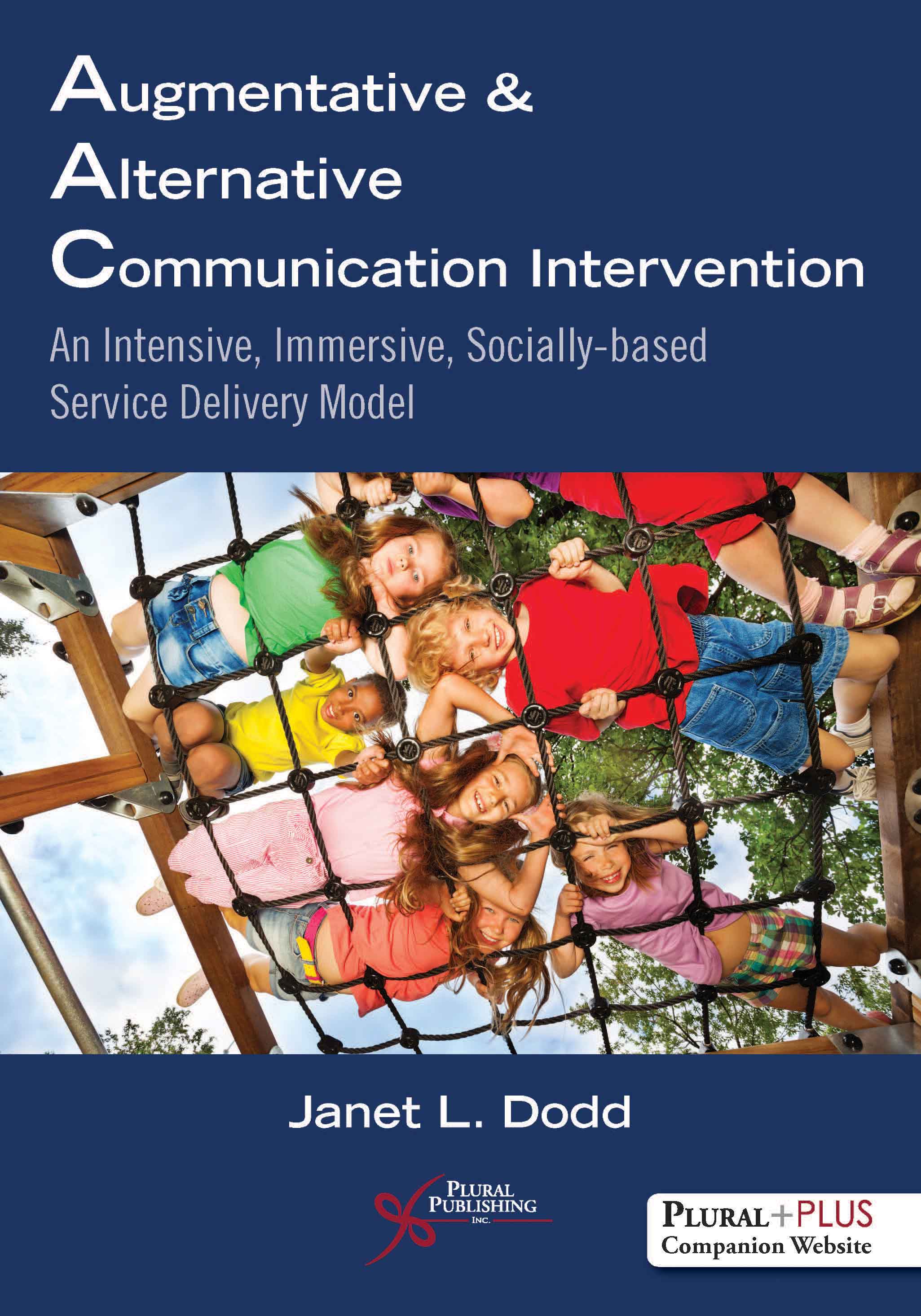
Augmentative and Alternative Communication Intervention: An Intensive, Immersive, Socially Based Service Delivery Model
First Edition
Janet L. Dodd
Details: 288 pages, B&W, Softcover, 7" x 10"
ISBN13: 978-1-59756-725-1
© 2017 | Available
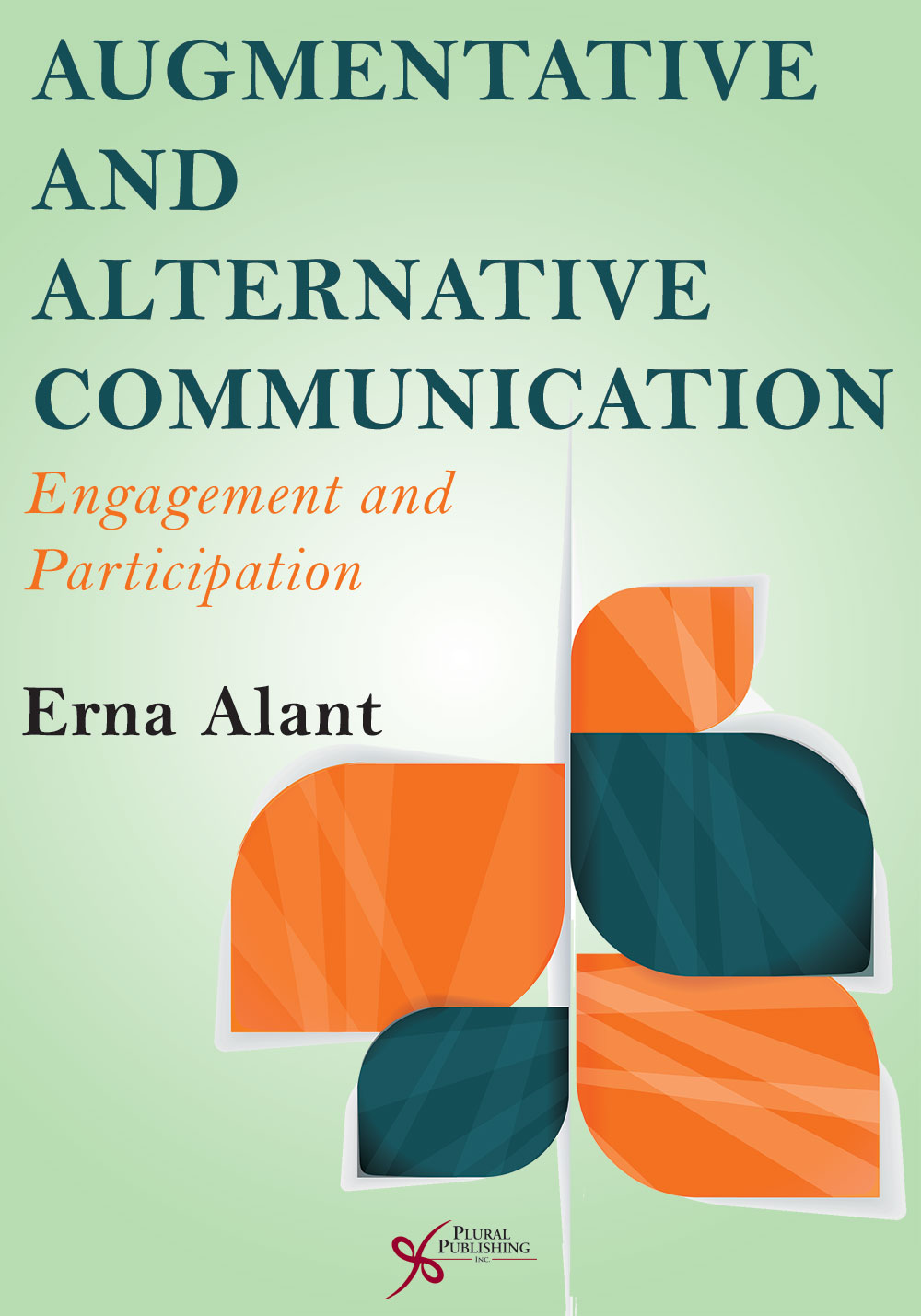
Augmentative and Alternative Communication: Engagement and Participation
First Edition
Erna Alant
Details: 320 pages, B&W, Softcover, 7" x 10"
ISBN13: 978-1-59756-713-8
© 2017 | Available
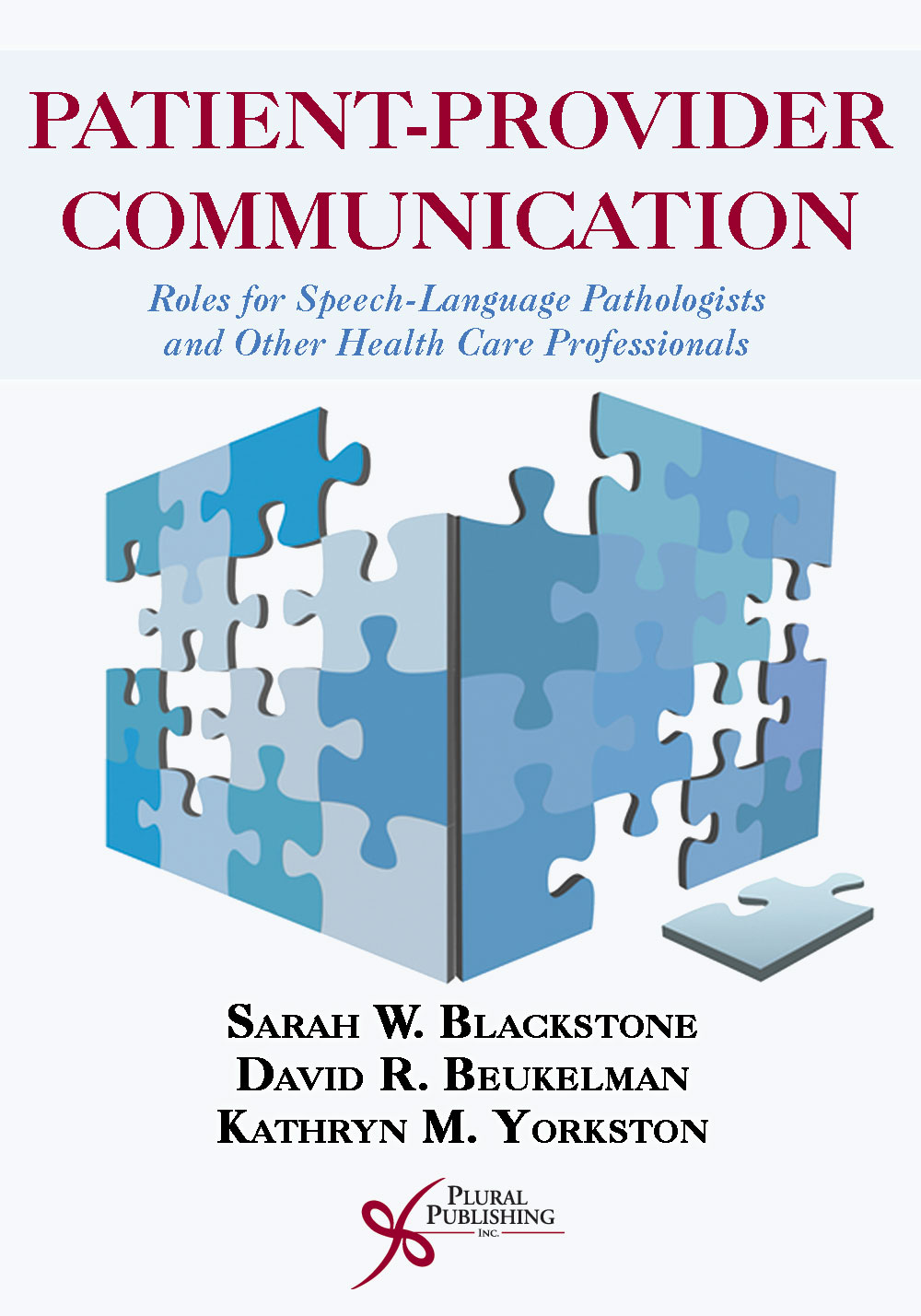
Patient-Provider Communication: Roles for Speech-Language Pathologists and Other Health Care Professionals
First Edition
Sarah W. Blackstone, David R. Beukelman, Kathryn M. Yorkston
Details: 352 pages, B&W, Softcover, 7" x 10"
ISBN13: 978-1-59756-574-5
© 2015 | Available
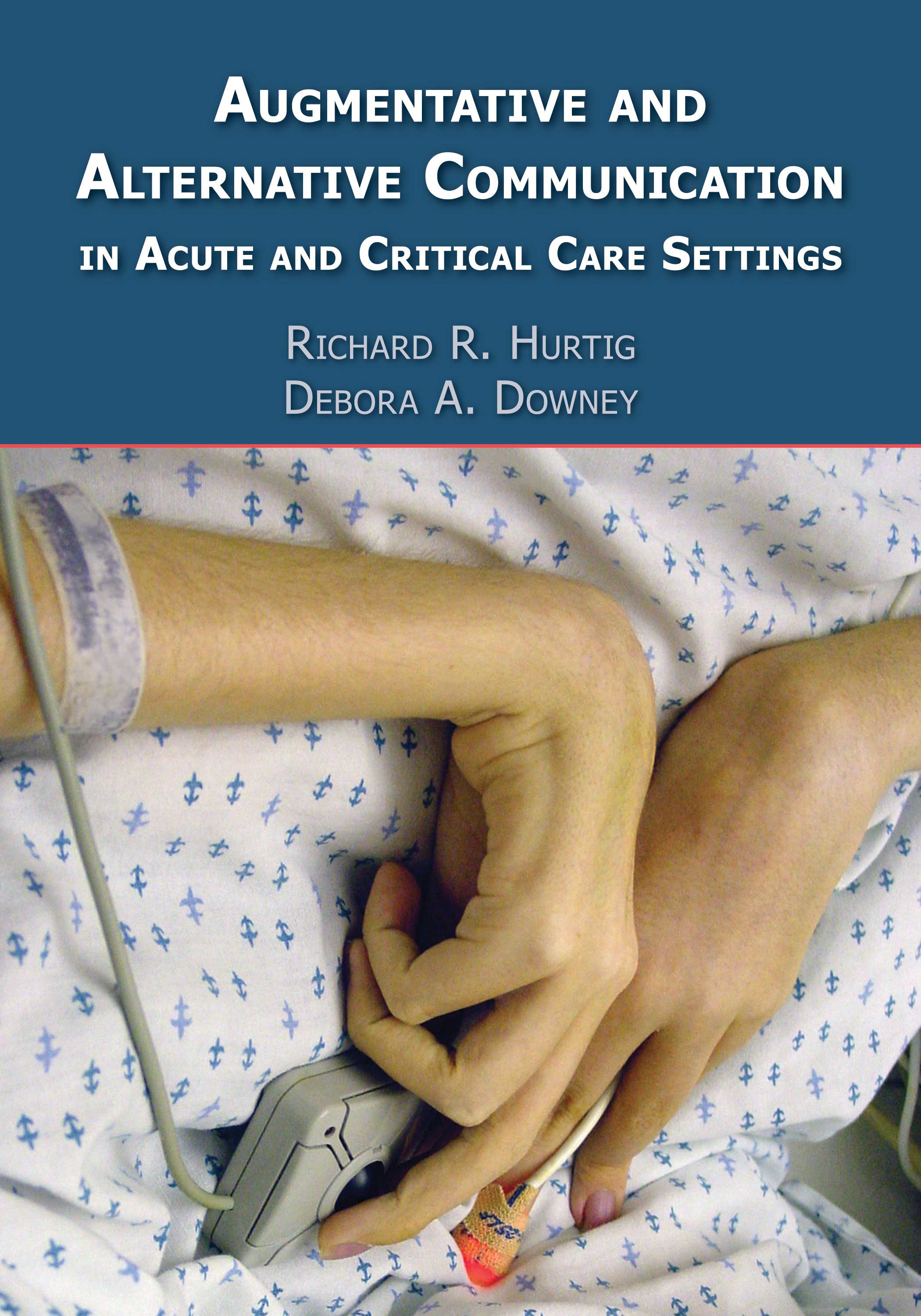
Augmentative and Alternative Communication in Acute and Critical Care Settings
First Edition
Richard Hurtig, Debora A. Downey
Details: 224 pages, B&W, Softcover + DVD, 7" x 10"
ISBN13: 978-1-59756-079-5
© 2009 | Available
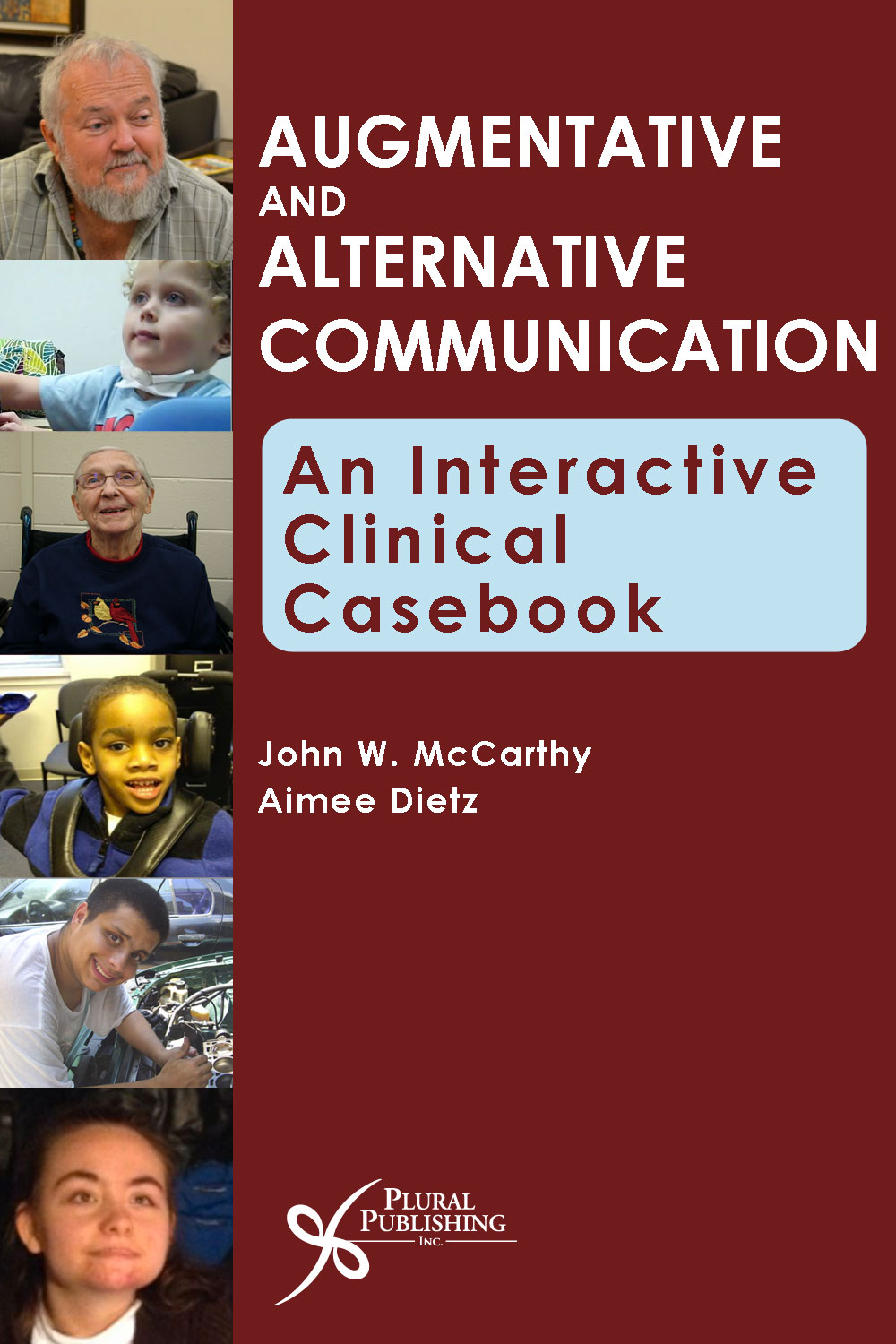
Augmentative and Alternative Communication: An Interactive Clinical Casebook
First Edition
John W. McCarthy, Aimee Dietz
Details: NOTE: THIS INTERACTIVE ONLINE PRODUCT IS ONLY VIEWABLE USING FIREFOX BROWSER.
© 2015 | Available
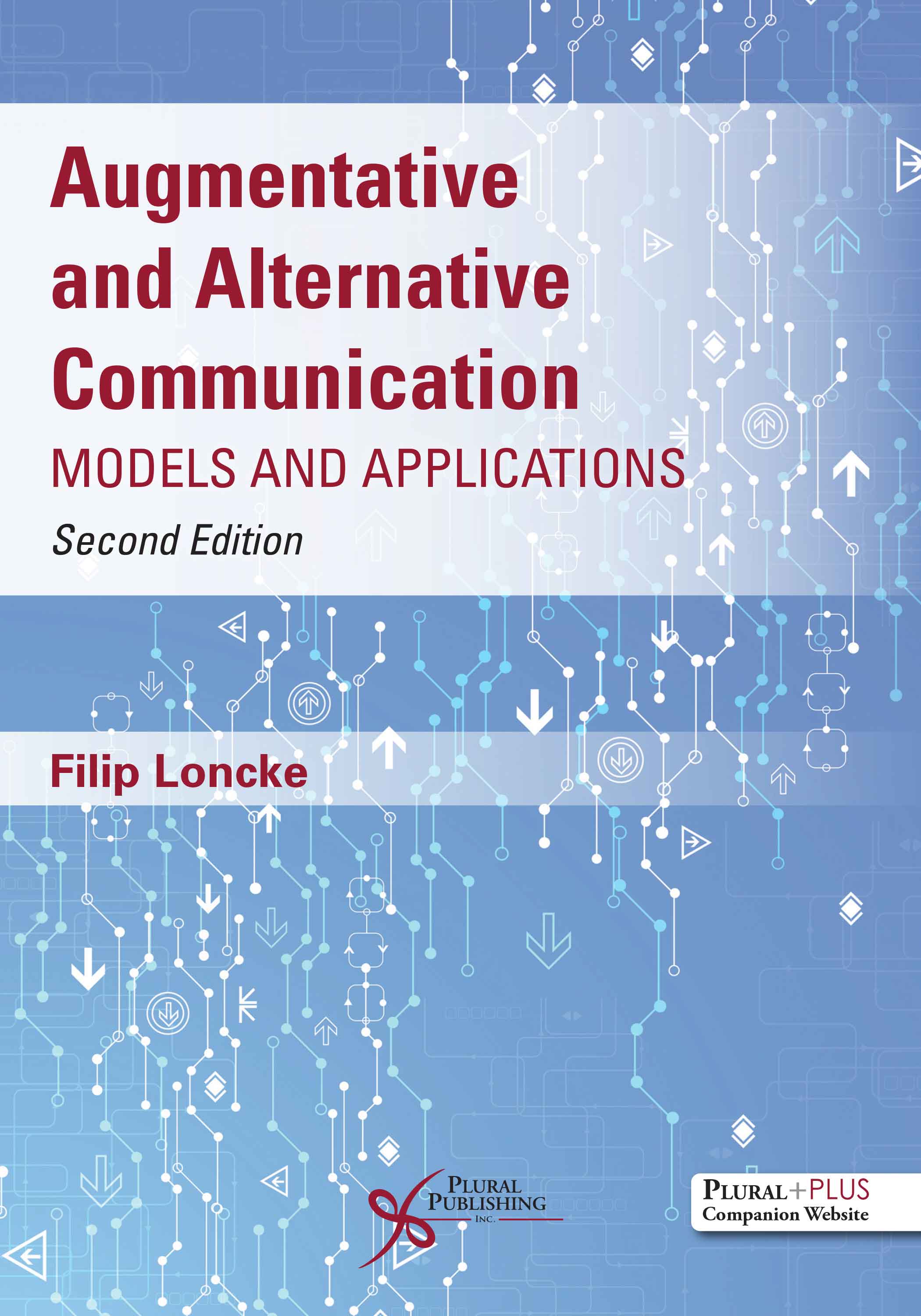
Augmentative and Alternative Communication: Models and Applications
Second Edition
Filip Loncke
Details: 321 pages, B&W, Softcover, 7"x10"
ISBN13: 978-1-63550-122-3
© 2021 | Available
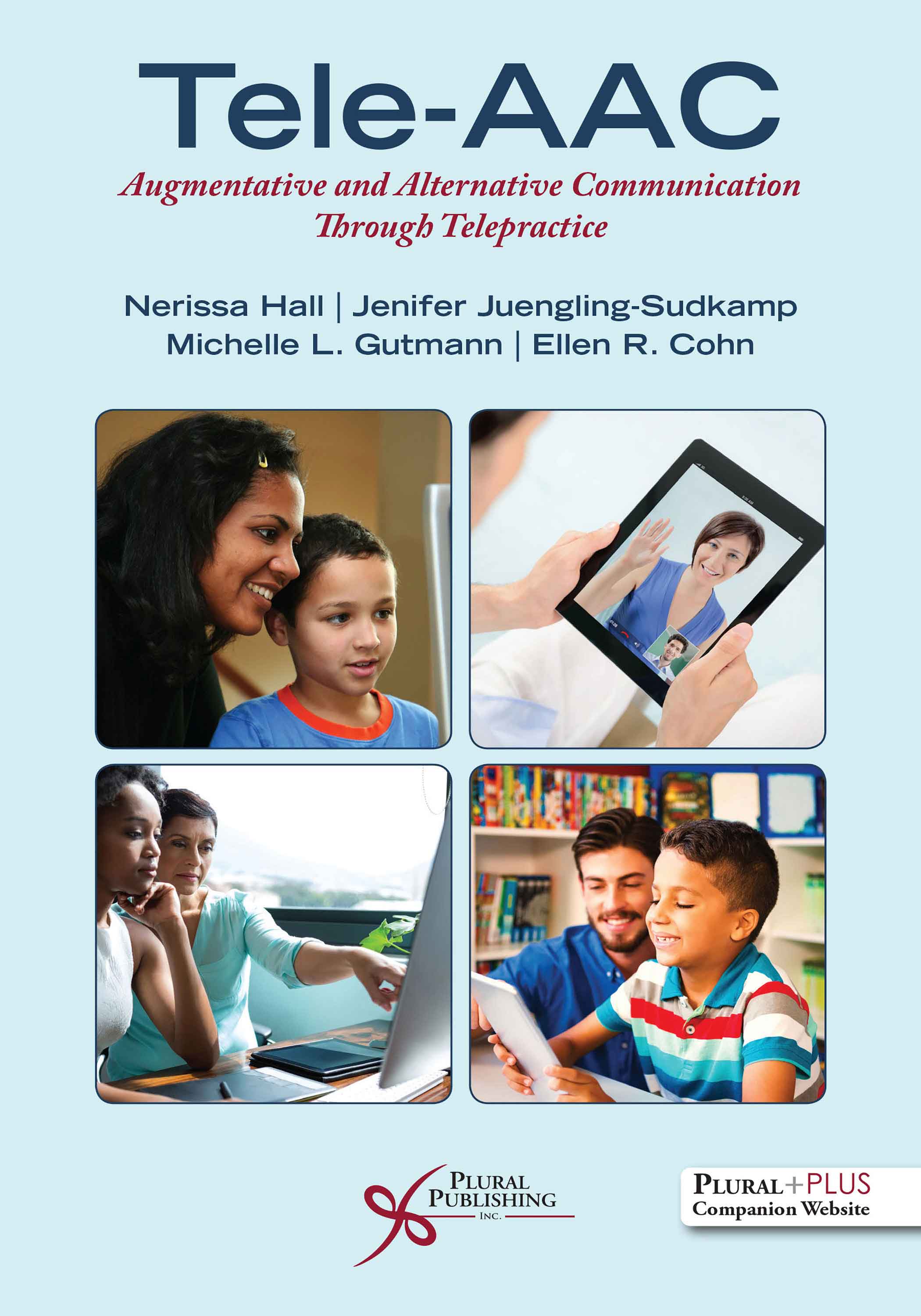
Tele-AAC: Augmentative and Alternative Communication Through Telepractice
First Edition
Nerissa Hall, Jenifer Juengling-Sudkamp, Michelle L. Gutmann, Ellen R. Cohn
Details: 330 pages, B&W, Softcover, 6" x 9"
ISBN13: 978-1-63550-145-2
© 2020 | Available
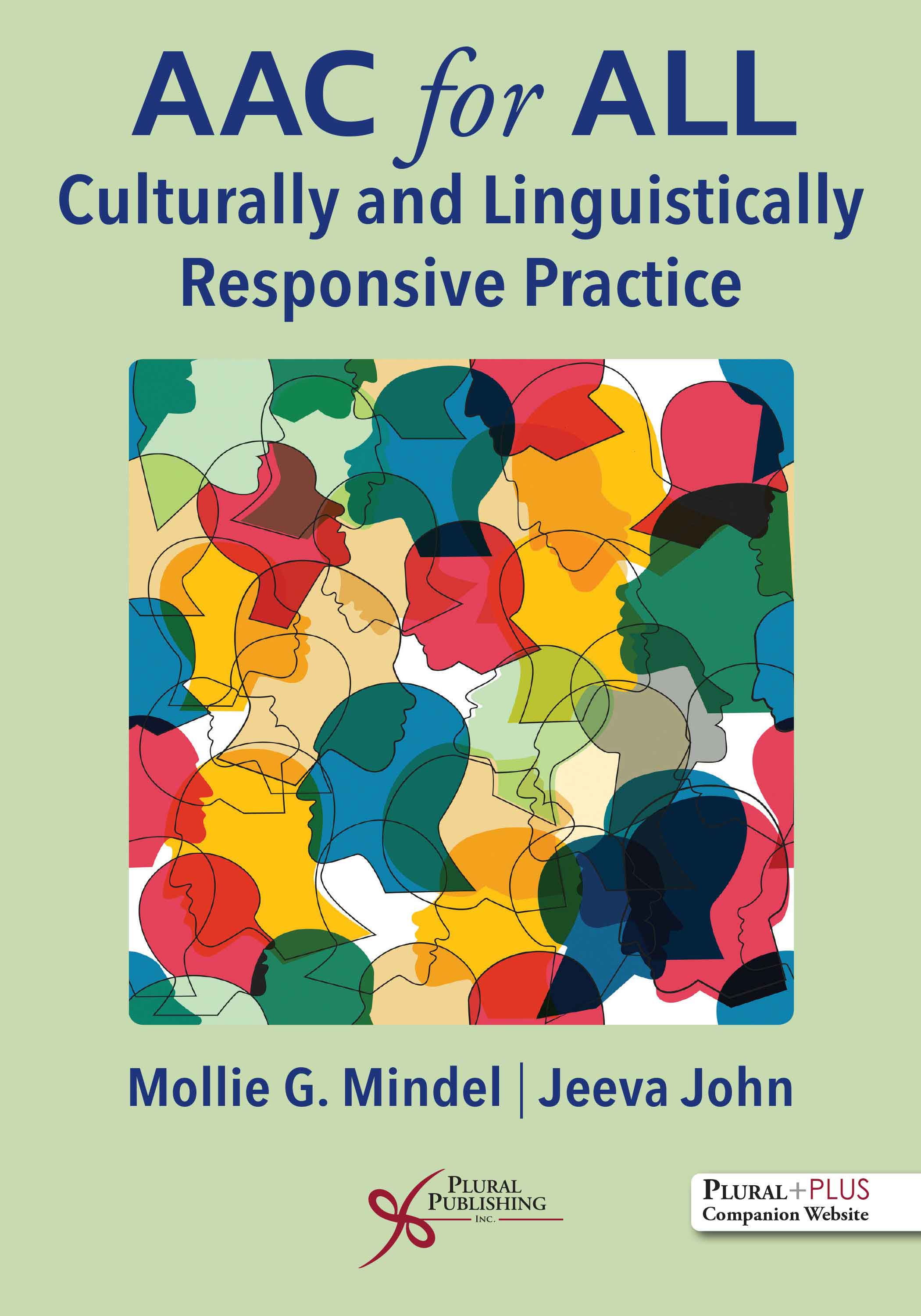
AAC for All: Culturally and Linguistically Responsive Practice
First Edition
Mollie G. Mindel, Jeeva John
Details: 200 pages, B&W, Softcover, 7" x 10"
ISBN13: 978-1-63550-285-5
© 2022 | Available
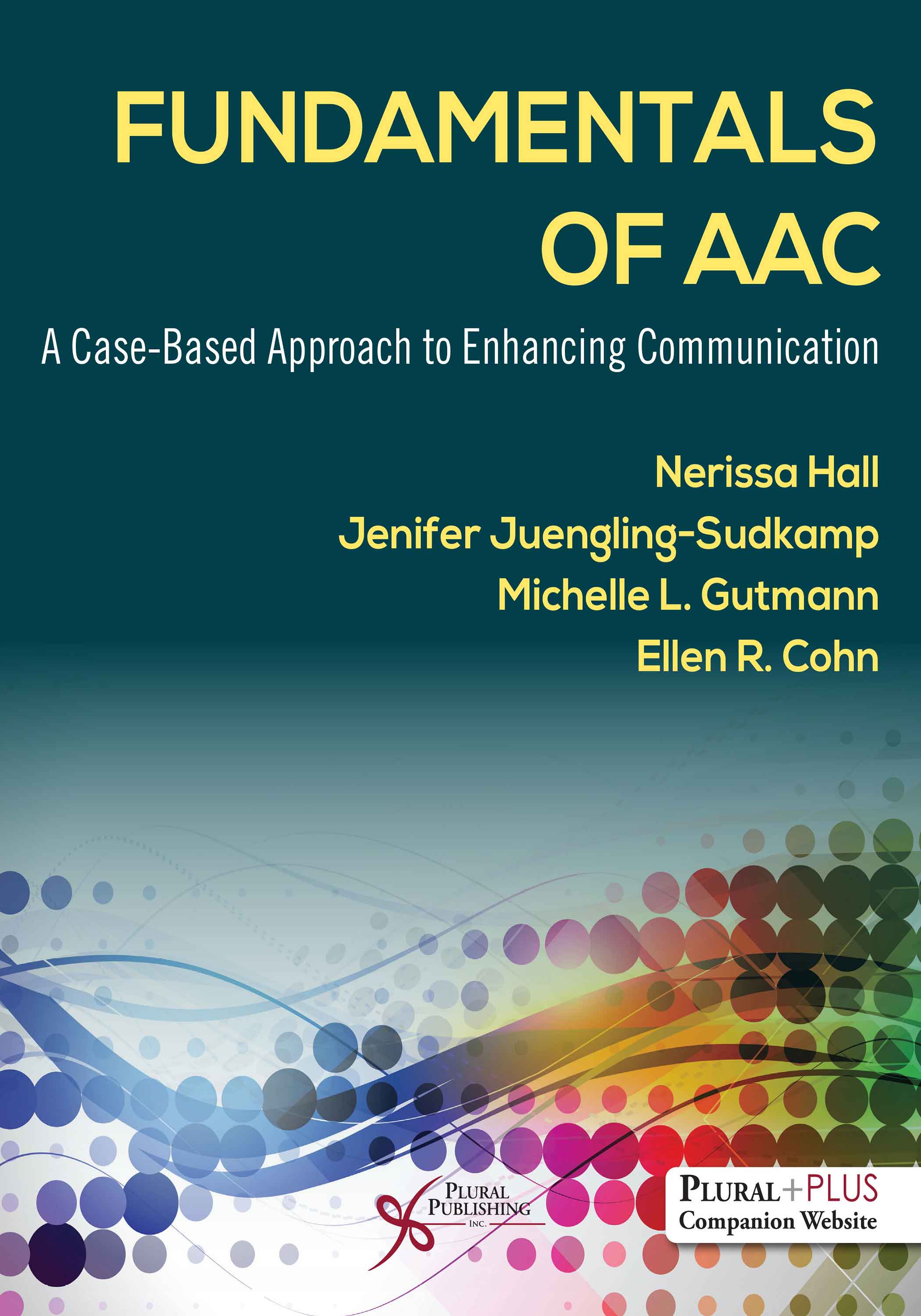
Fundamentals of AAC: A Case-Based Approach to Enhancing Communication.
First Edition
Nerissa Hall, Jenifer Juengling-Sudkamp, Michelle L. Gutmann, Ellen R. Cohn
Details: 545 pages, B&W, Softcover, 8.5" x 11"
ISBN13: 978-1-63550-353-1
© 2023 | Available
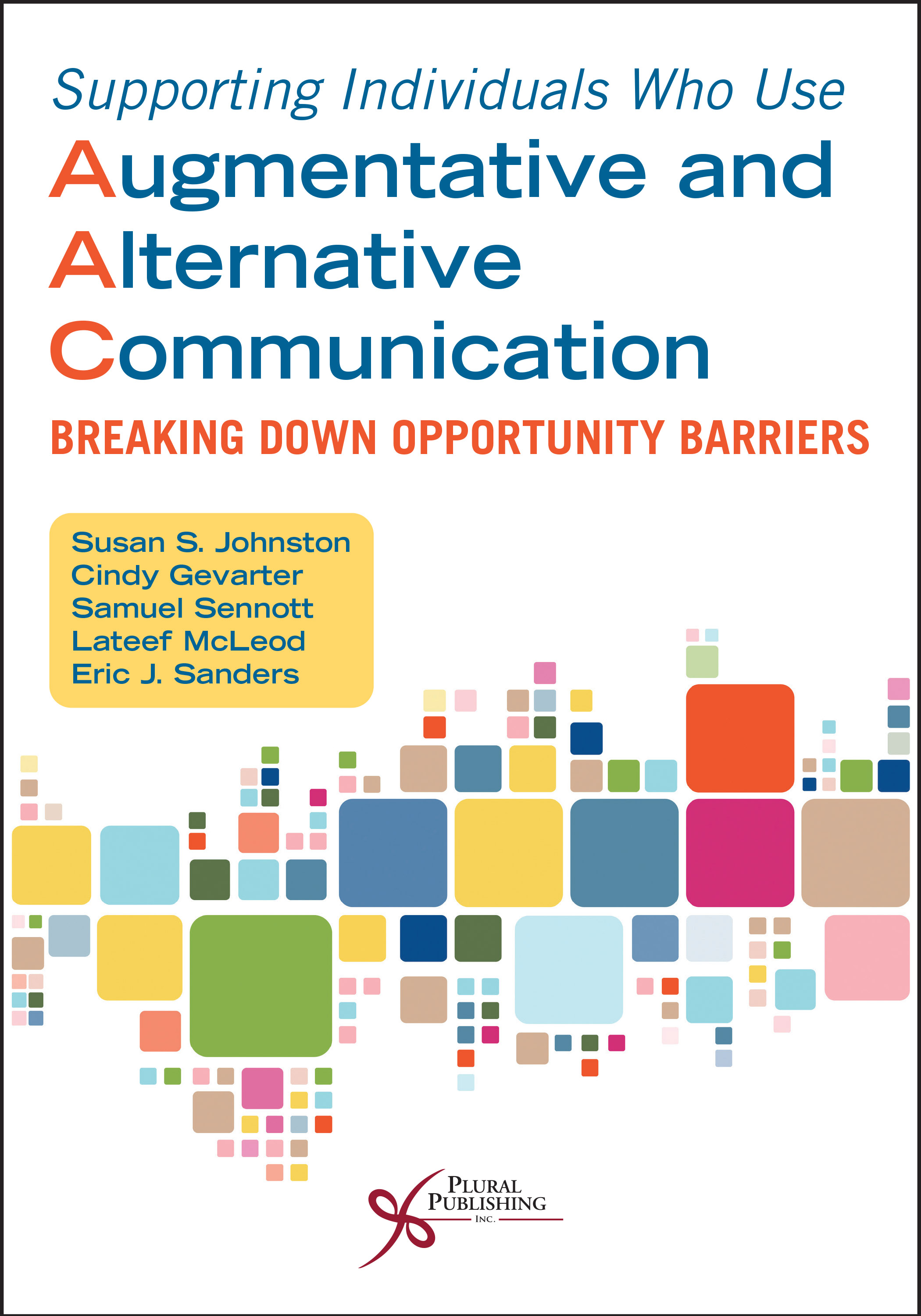
Supporting Individuals Who Use Augmentative and Alternative Communication: Breaking Down Opportunity Barriers
First Edition
Susan S. Johnston, Cindy Gevarter, Samuel Sennott, Lateef McLeod, Eric J. Sanders
Details: 270 pages, B&W, Softcover, 7" x 10"
ISBN13: 978-1-63550-391-3
© 2023 | Available
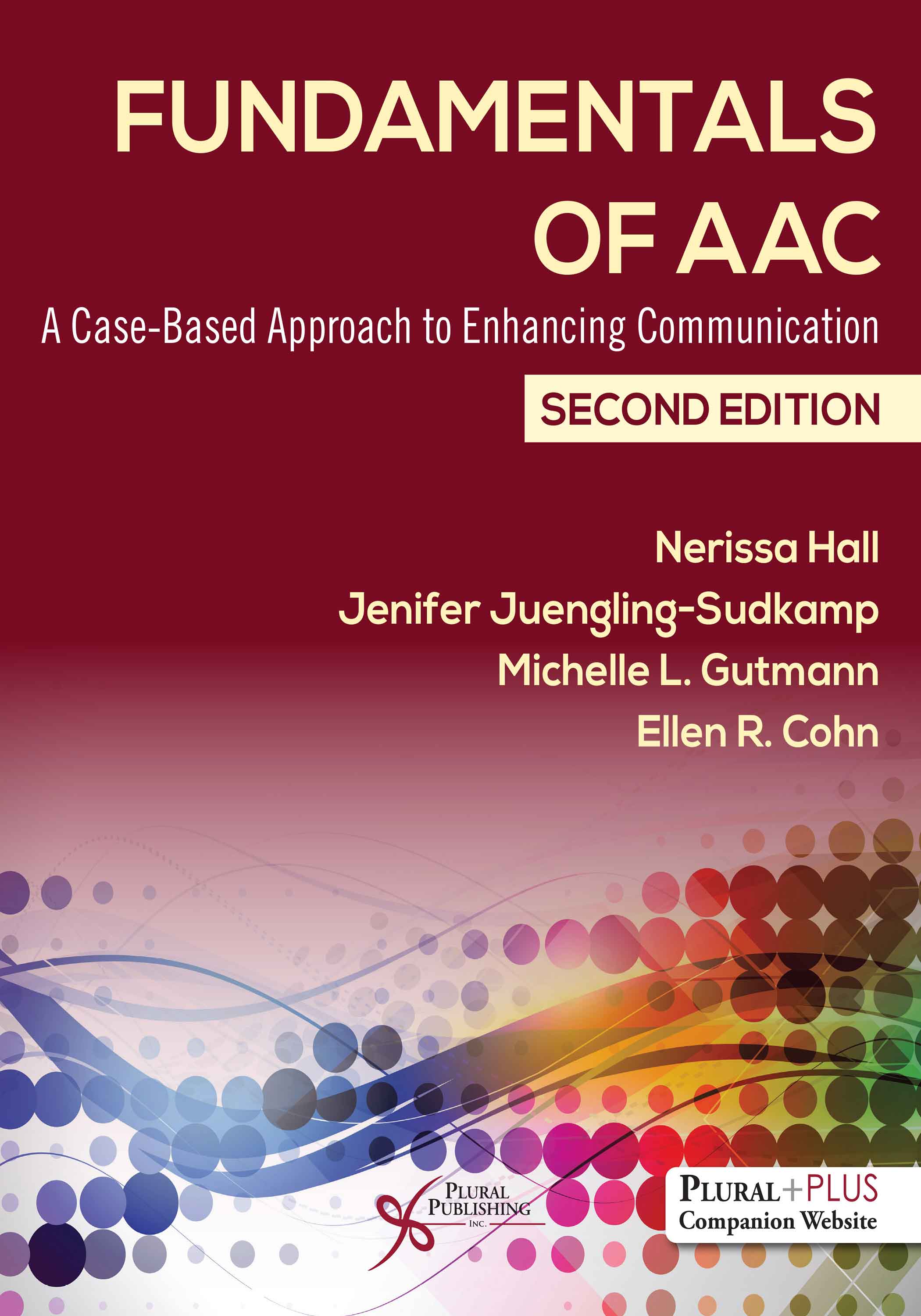
Fundamentals of AAC: A Case-Based Approach to Enhancing Communication
Second Edition
Nerissa Hall, Jenifer Juengling-Sudkamp, Michelle L. Gutmann, Ellen R. Cohn
Details: 574 pages, B&W, Softcover, 8.5" x 11"
ISBN13: 978-1-63550-773-7
© 2027 | Available

